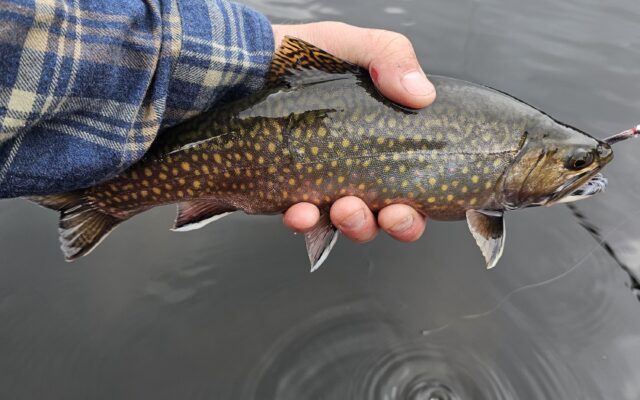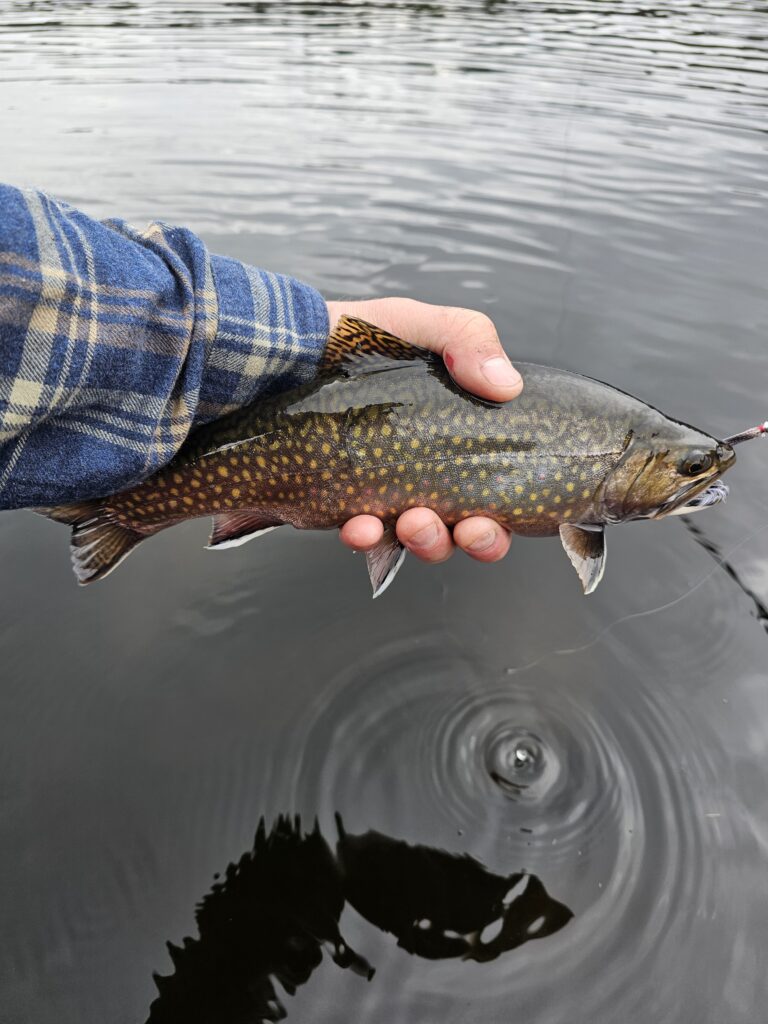
Spring fly fishing in the backcountry is unpredictable
By Kevin McKay
Springtime in Maine is a fickle season, especially for anglers. As a guide who chases pike at the season’s cusp, I’ve learned that the West Branch of the Penobscot River can be unpredictable — water temperatures are often too cold, the flow fluctuates and fish movements are a gamble until you’re actually on the water.
In late April, our fishing plans changed several times. My client Phil and I had cycled through multiple plans: first targeting pike, then switching to bass when his wife might join. When she wasn’t able to, I wondered what exactly we should venture for.
Over a dinner of steak and wine with Phil and my wife Stac, I laid out some options. The weather forecast looked promising — light wind, and the rain was going to hold off until the afternoon. We could explore the West Branch (though I had never been up there this early), search for a new salmon river, chase smallmouth bass or embark on foot to a remote pond.

CATCH — BDN Outdoors Contributor Kevin McKay’s fishing client Phil caught one brook trout during a trip to a remote fishing pond in Maine.
A quick scroll through last year’s photos revealed that exactly one year ago, Stac had landed her massive brookie from this very pond. This memory sparked our plan.
I explained to Phil that it wasn’t a numbers game, but we were going for the experience and a chance at a wild, native brook trout — and a big one.
This pond is my paradise. The journey there was a 5-mile hike through terrain most never see. Years ago, a buddy and I hiked two canoes in — a grueling task I wouldn’t recommend unless you have a few people to help.
Maine harbors the last stronghold of wild native brook trout in the United States. These remote ponds have seen little to no fishing pressure because they’re so hard to access, and pond fishing is a great way to escape the crowds you find on rivers.
When I got up Saturday morning, I had to change gears. All my rods were set up for pike and bass. I got our backpacks ready while Stac made sandwiches for the day. I dismantled three rods and put them in tubes for the hike in. I selected a trio that would allow us to fish multiple depths: one rod with floating line, one intermediate and one with a sink tip.
I grabbed flies from different boxes to make sure we were covered in case of a hatch, although I didn’t anticipate we’d run into one. The ice hadn’t been out long, and the pond likely hadn’t warmed up enough. I figured we’d be fishing streamers all day.
Safety was paramount. I packed life jackets because the water was cold and we were fishing from a canoe. I also made sure we had a first aid kit and a survival whistle.
As we hiked into the remote pond, we had to watch our step. Moose poop was scattered everywhere. With this amount of sign, I was surprised we didn’t see one. Aside from some birds, Maine’s state mammal remained elusive.
As we hiked, I told Phil stories from past trips about moose sightings and strange encounters with people. I told him about the time there were two bull moose in different coves of the pond, standing chest-deep in the water eating vegetation, and how we were able to paddle fairly close in the canoe. Another time, a cow moose and her calf crashed through our camp without touching a single tent.
When we crested the hill and the pond came into view, it still, after 20 years of fishing it, brought a smile to my face. It’s an oasis in the middle of the Maine woods — a little piece of heaven. The water was calm and picture-perfect. It’s what fly anglers dream about: a remote pond with wild brook trout and a shot at a 3-pounder.
As we rigged up, I heard a splash across the pond and saw rings on the water. I joked about how I could hear a fish rise from across the pond but can’t hear my wife on the other end of the couch.
If you haven’t fly-fished from a canoe, it’s not easy. You’re sitting at water level and trying to cast a sinking line. Some people use 10-foot rods for extra leverage.
I paddled Phil toward the spot where I saw the fish rise. About five casts later, he hooked into a native Maine brook trout. It was around two pounds.
Not the three-pounder we were after, but a beautiful fish. I snapped a quick photo, and we kept fishing.
Unfortunately, that was the only trout Phil caught that day. He wanted me to fish with him, so I took the opportunity to experiment with flies I usually wouldn’t. I went through several patterns, but ultimately the trusty woolly bugger was the fly of choice.
I landed one smaller than Phil’s and lost a larger one near the canoe.
As the weather shifted, so did the fishing conditions, and the fish became less active.
I think what happened was this: when we first got to the pond, fish were rising sporadically, but as the weather shifted, they stopped being active.
We hiked out in pouring rain and in silence. We were tired and soaked. Still, as I reflected on the day, it played out exactly as I expected. A year ago, Stac had landed a 3-pounder. A week later, my son and I went back and only caught a couple of small trout.
To the aspiring backcountry angler, I offer this advice: get out there. If you don’t go, you’ll never know. Spring waters are warming, and the season’s finest hatches are just starting. And remember, it’s not the number of fish you catch, it’s the experience.